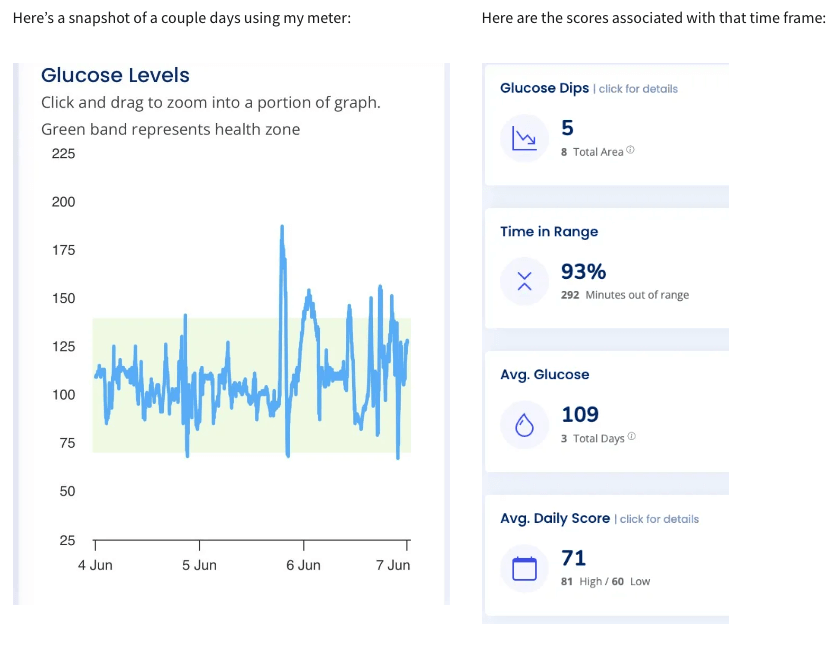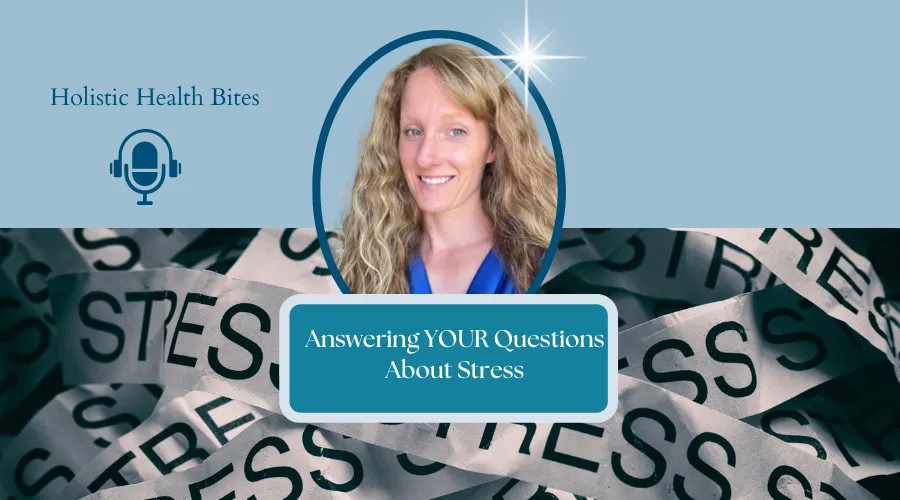
Why do Continuous Glucose Monitoring?
I LOVE data. I always want to know how things work and WHY I should do things (or not do things). I don’t just go with the flow or follow standard advice – I need details and reasons. Proof or evidence.
Throughout my nutrition and fitness training, I have always known blood sugar regulation is a big priority, but I never really know exactly what was going on in my body throughout the day.
Sure I’ve spot-checked with a glucose meter and I’ve had lab work done showing my fasting glucose, insulin, and hemoglobin A1c – but none of those are truly measuring how I react to certain foods, what happens during periods of fasting (even sleeping), how alcohol affects things, how exercise affects things.
The hemoglobin A1c is the most informative, but even it makes several assumptions. The hemoglobin A1c test is a measure of how glycated (sugar-attached) your red blood cells are. Since red blood cells typically live around 90 days, this becomes an estimate of your blood sugar levels over the last 90 days. There are limitations though – not all blood cells live to 90 days. Some die sooner, some liver longer. It also doesn’t take into account if your blood sugar is spiking high and dropping low or staying relatively even – it only gives you an idea of the average over those roughly 90 days. A person who stays relatively even all day long can have drastically different health than someone who swings wildly throughout the day with the same average.
This just wasn’t good enough for me. I want far more detail than guesses, assumptions, and averages. So I have invested in a continuous glucose monitor! There are several companies on the market that offer subscriptions without a doctor’s prescription or a diabetes diagnosis. These companies handle the prescription for you when you subscribe. I am currently using and recommending Theia Health for CGMs. They are providing the most modern sensor on the market today.
Continuous Glucose Monitor
This little device sits on the back of my arm, reading my blood sugar constantly. This is a little different than a blood glucose monitor as it is actually testing the sugar in the interstitial fluid rather than the blood.
It is totally painless to put on. The device itself is about the size of a quarter, then gets covered up by a sticker bandage to ensure it stays put.
It will read my glucose readings for 14 days on one sensor. Then, you simply remove the sensor from your arm and put a new one on the other arm.
The subscription also comes with a smartphone app that allows me to track my glucose readings, meals, exercise, and anything else I want to track.

Lessons learned from my CGM so far:
These are insights I’ve gained personally, but they may not translate directly to you! Bioindividuality is real!
- My body reacts pretty severely to refined carbohydrates. The worst meals I’ve had included wraps, breads, added sugars (salad dressings, sauces, and soups).
- The combination of fat and carbs is also terrible for my body – large slow spikes that stay high for a long time.
- Going for a walk after a meal makes a HUGE difference in post-meal glucose spikes. They’re much lower and recover much quicker. Even a casual walk around the blood. Does not have to be a fast paced or fitness walk.
- Alcohol causes my glucose to initially drop, but then it raises and stays higher all night long, sometimes into the next day.
- Fruit has been hit or miss – sometimes it spikes excessively, sometimes it hardly raises at all. Pairing fruit with protein seems to help a lot.
- Exercise helps to keep glucose levels down, though they raise slightly during and post exercise – which makes sense since your body uses more glucose during exercise.
- Coffee, coconut milk, heavy whipping cream, and stevia do not impact my glucose readings.
- Protein and fat have minimal impact on my glucose readings and seem to keep me in the healthy zone all the time.
If you’re like me and want cold-hard data on your health, I highly recommend looking into a CGM! The great news is, you don’t need it for life (unless you’re Type 1 Diabetic and maybe Type 2 Diabetic). Generally, you can test out all of your common foods, exercises, and lifestyles in 1-3 months. And you don’t have to use it all consecutively. You can wear it for a few weeks, then take a break between sensors for as long as you wish. Some people like to test seasonally as lifestyles and dietary change vary with seasons. It’s very customizable!
If you want to get your own CGM, click here to check out the options. If you’d like my assistance, guidance, and feedback while using your CGM, schedule a free call with me here so I can get to know your story a bit and we can create a plan.





















0 Comments